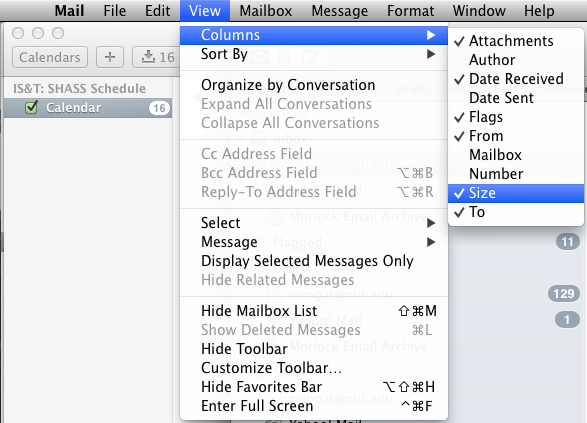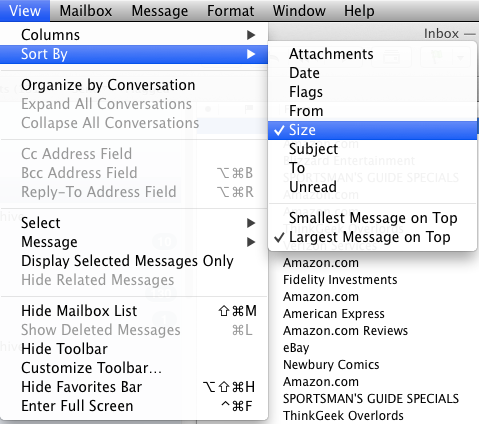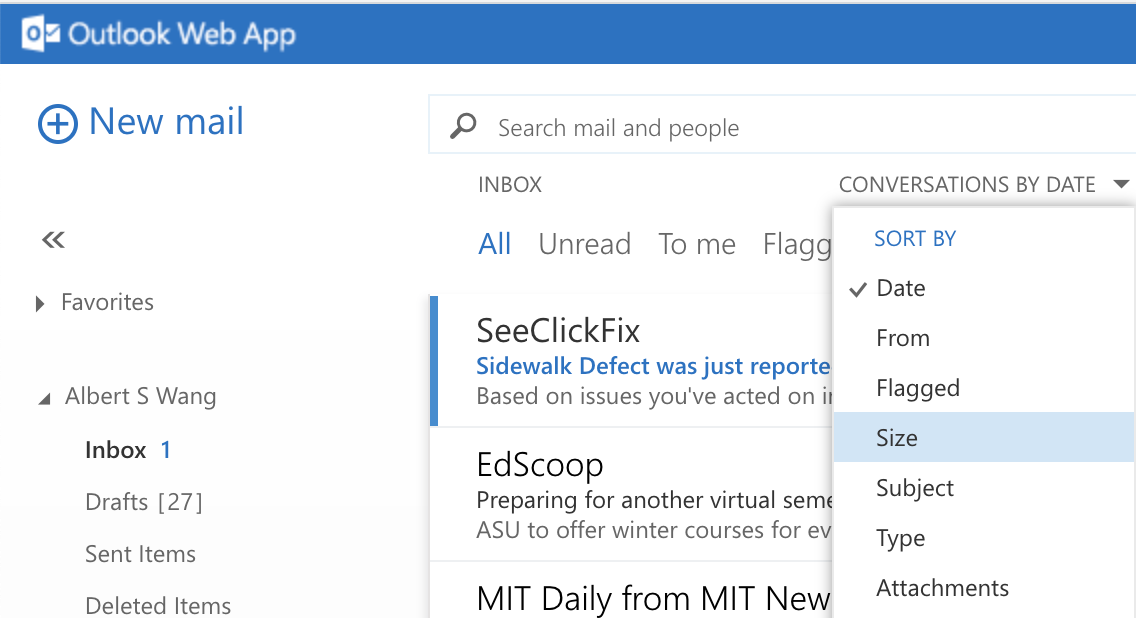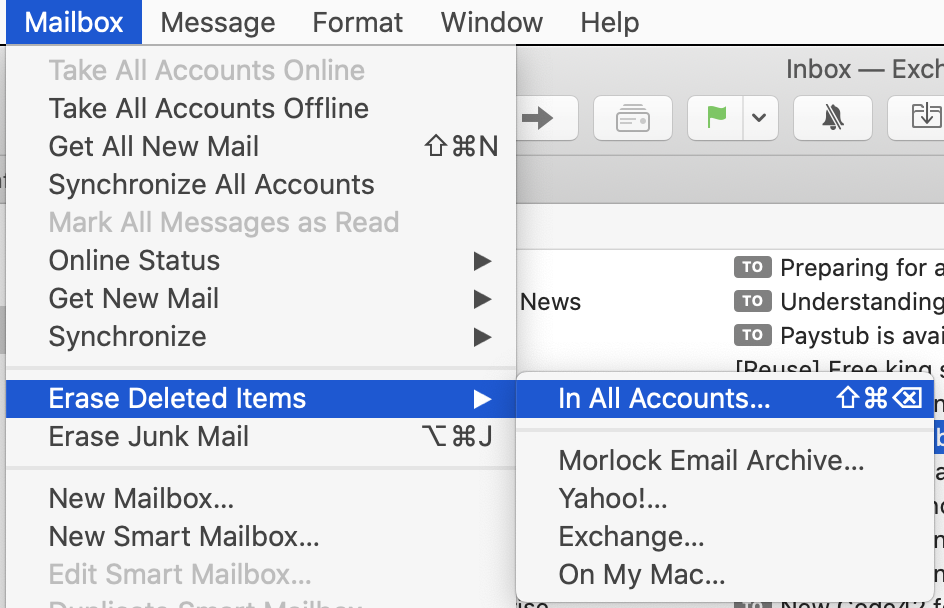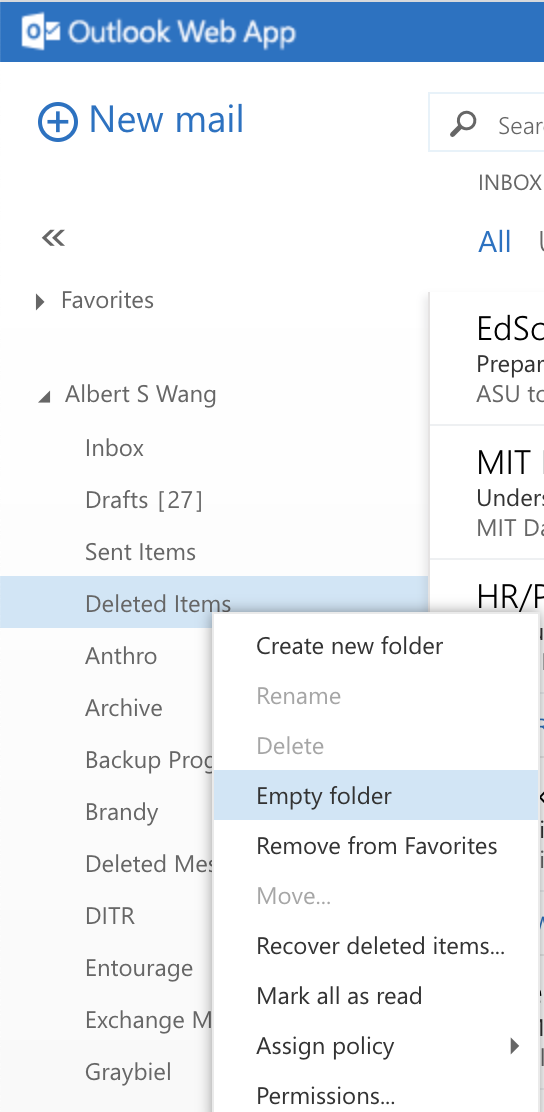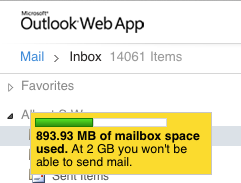...
How To Keep Your Disk Usage Down
Turning on the size column
One of the most useful tools for deciding which emails to delete first is the size column in Apple Mail. This column allows you to see how big an email is and which emails are consuming most of your disk quota.
To enable this, go to View -> Columns -> Size
When the Size attribute is checked, the column for email size will appear in your main Apple Mail window view.
Deleting unwanted emails
For most users there is no reason to keep everything you recieve in email. The easiest way to maintain low disk usage in your email is to view your emails by size.
To do this in Apple Mail:
To do this in OWA click on "Conversations By Date" and select "Size".
Once you're set your emails to sort If you list this view by largest emails first you can then save the large attachments and then delete the large emails you don't need first. This strategy will give you the most bang for the buck in freeing up the most space in your email for the least amount of work.
Once you've removed all the large emails, you can then view your emails by subject and, for example, if you get marketing emails from Amazon or Ebay, you can sort by subject and delete all of these emails at once if they use the same subject pattern.
Don't forget afterwards that you need to go to Mailbox-> Erase Deleted Items-> In All Accounts... to actually delete the emails and free up your email quota.
In OWA:
On a 2 button mouse, Left CLICK
OR
On a 1 button mouse, Control-CLICK
on "Deleted Items" and select "Empty Folder" to dump all of your deleted items.
Then after you've erased deleted items in all your accounts, you can set your email back to view your emails by date.
Archiving Emails Locally
Apple Mail on Macs
...
To check your quota before you're you're out of space, log into owa.mit.edu and move your mouse carefully over your name in the left column and wait 1-2 seconds. A yellow box with your current disk space quota usage should appear. If you accidentally move your mouse while the yellow box with your current usage is showing or accidentally click the mouse, the box will go away. To get it back, you will have to move your mouse away from your name about 3-5 seconds (sometimes you will need to click on a blank spot in the owa window to get it to "reset") and then move your mouse slowly back to your name and wait 1-2 seconds to get the yellow box showing your current disk quota usage to come back up.
IMPORTANT: If you max out your quota, you will not be able to send mail. Depending on how badly you're over your quota you may not be able to delete email either. Should you encounter this situation, you or your IT Tech liaison, or your AO will need to contact IS&T directly to have your quota increased either temporarily or permanently to fix this issue. Requests for permanent quota increases should ideally be made to IS&T by the AO or section heads.
A sample of what this looks like is here:
Email sizes
Please note when sending and receiving email there is a maximum email size of approximately 30MB per email on the MIT Exchange email servers. This assumes both sender and recipient are on the MIT Exchange email system.
...
We do not recommend users activate the local client spam filtering in Apple Mail or Outlook. These filters will only work onthe on the specific machine you're on and do not stop spam on any other computer or device you check email on or on MIT's OWA webmail. Instead, users should manage spam with Spam Quarantine. Spam Quarantine stops spam mail before it gets to your Exchange email account. We have set up a page describing how to use this service here.
...
